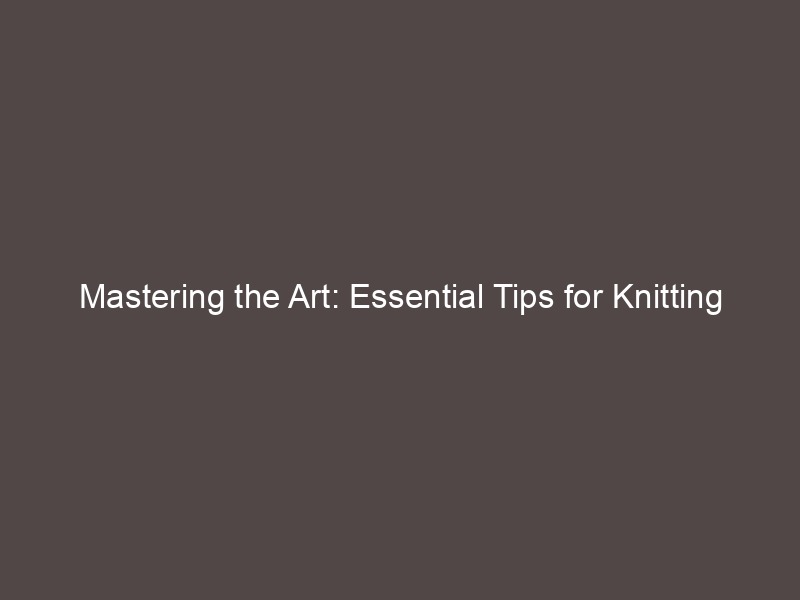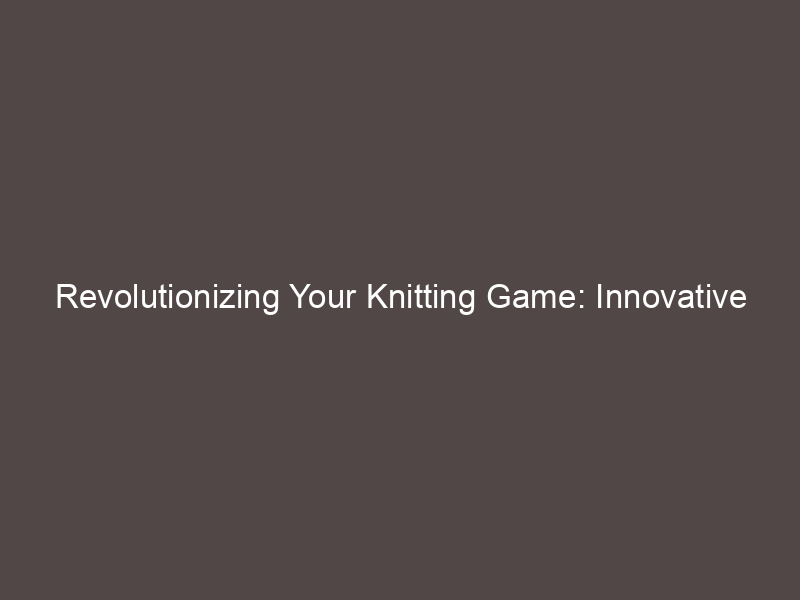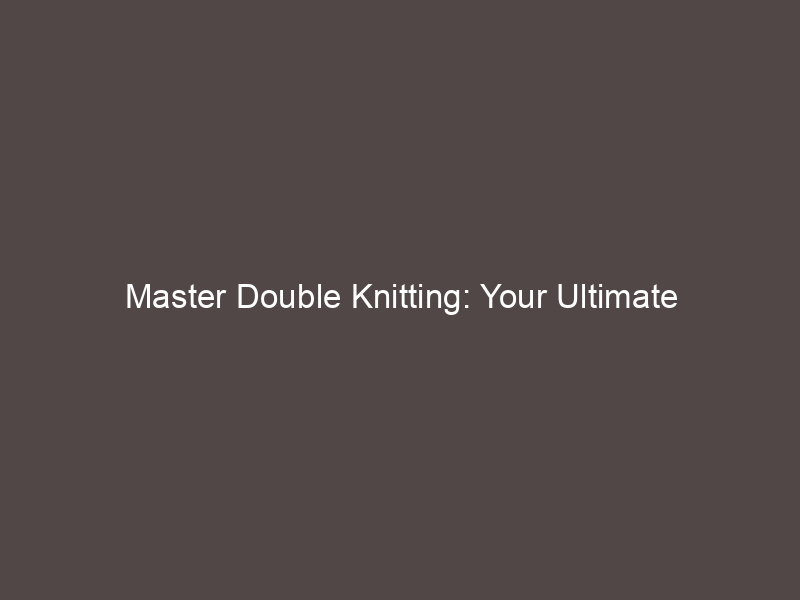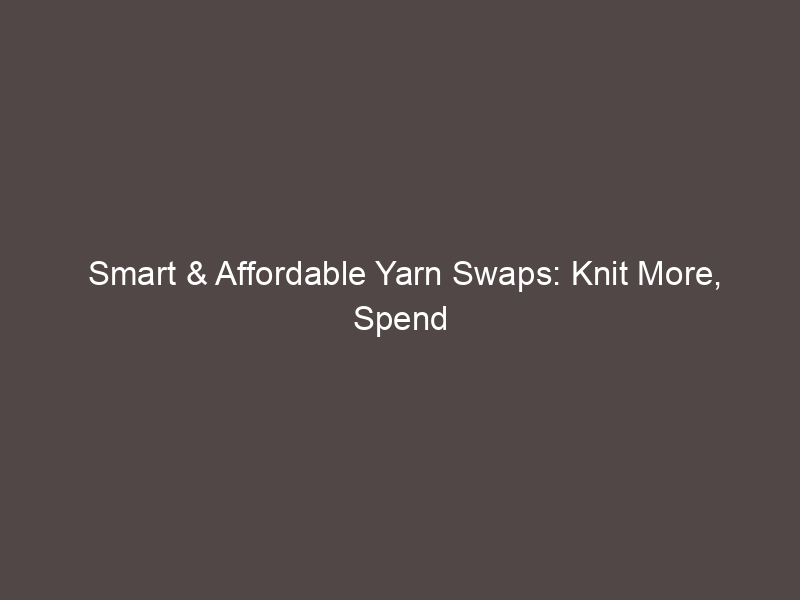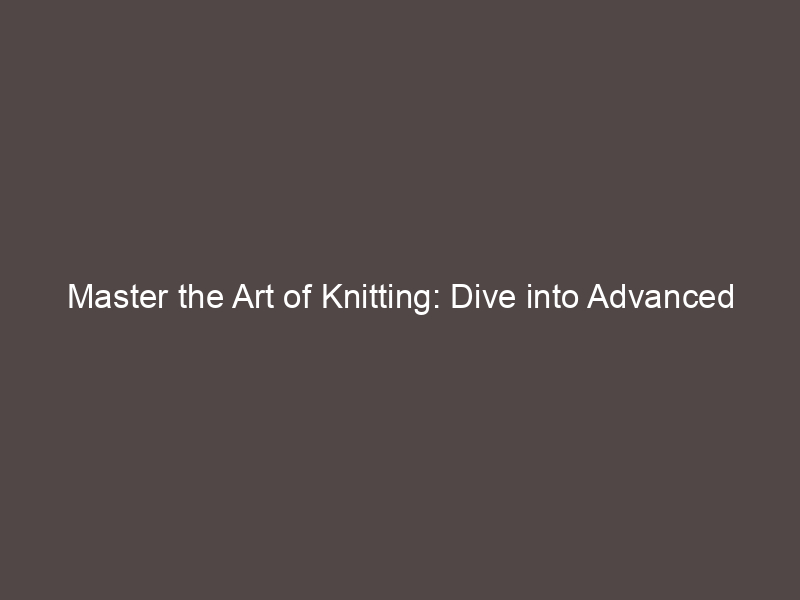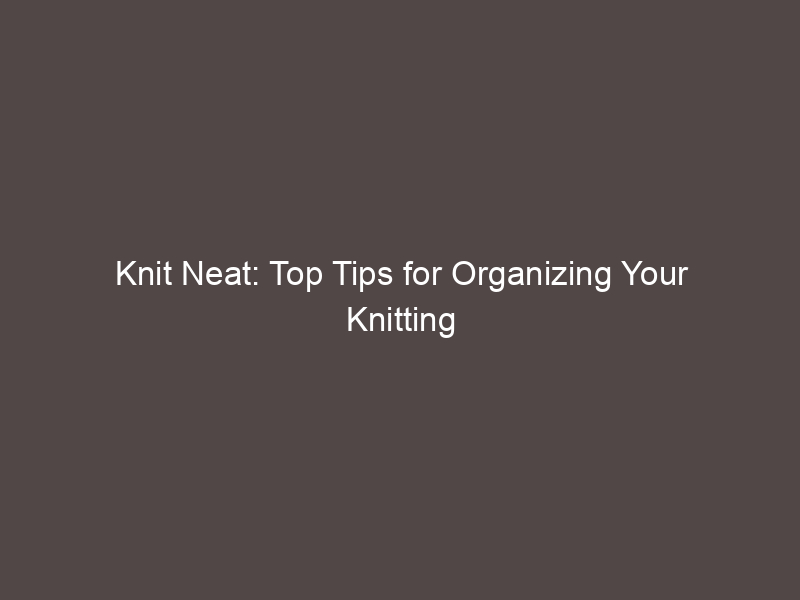Introduction to Knitting with Double Pointed Needles
Hey there, knitting enthusiasts! Today, we’re diving into the fascinating world of double pointed needles. Whether you’re a beginner or a seasoned knitter, there’s always something new to learn. So, let’s get started!
- Understanding the Basics of Double Pointed Knitting
- Benefits of Knitting with Double Pointed Needles
Double pointed needles, or DPNs, are a type of knitting needle that have points at both ends. They’re typically used for knitting in the round, which is a technique often used for creating seamless items like socks, hats, and sleeves. To knit with DPNs, you divide your stitches among three or four needles, then knit with a fifth. It might sound tricky, but with a little practice, you’ll be knitting in the round like a pro!
Knitting with DPNs has many benefits. For one, it allows you to create seamless items, which not only look great but also feel more comfortable to wear. Plus, DPNs can be used for a variety of knitting techniques, making them a versatile tool to have in your knitting kit. And let’s not forget the sense of achievement you’ll feel when you’ve mastered a new skill!
So, are you ready to give double pointed needles a try? Stick around as we explore how to choose the right DPNs, share some handy tips and tricks, and show you how to care for your needles. Let’s get knitting!
Choosing the Right Double Pointed Needles
So, you’re ready to dive into the world of knitting with double pointed needles? That’s awesome! But before you start, it’s important to choose the right needles for your project. Let’s take a look at some factors to consider and a few recommended brands.
- Factors to Consider When Choosing Double Pointed Needles
- Material: Needles come in different materials like bamboo, metal, and plastic. Bamboo needles are lightweight and have a good grip, making them great for beginners. Metal needles are slick and fast, perfect for more experienced knitters. Plastic needles are affordable and lightweight, but they may not be as durable.
- Size: The size of your needles can affect the look and feel of your finished project. Larger needles create looser stitches, while smaller needles create tighter stitches. The size you need will depend on your yarn and your pattern.
- Length: Double pointed needles come in different lengths. Shorter needles are good for small projects like socks, while longer needles are better for larger projects like hats.
- Recommended Brands for Double Pointed Needles
- Knitter’s Pride: Known for their high-quality needles in a variety of materials and sizes. Knitter’s Pride is a favorite among many knitters.
- Clover: This brand offers affordable, durable bamboo needles that are great for beginners. Check out Clover for a variety of sizes and lengths.
- Addi: If you prefer metal needles, Addi is a top choice. They’re known for their smooth, fast needles.
Choosing the right double pointed needles isn’t as simple as picking the prettiest ones. Here are a few things to keep in mind:
There are many great brands out there, but here are a few that knitters swear by:
Remember, the best double pointed needles are the ones that feel comfortable in your hands and work well with your yarn. Happy knitting!
Double Pointed Needles Tips and Tricks
Hey there, knitting enthusiasts! Let’s dive into some handy tips and tricks to make your journey with double pointed needles a smooth sail.
Knitting Tips for Beginners
Starting with double pointed needles can be a bit tricky, but don’t worry, we’ve got you covered. Here are some beginner-friendly tips:
- Getting started with double pointed needles
- Common mistakes and how to avoid them
First things first, you need to know how to hold your needles. Hold two needles in your right hand just like you would hold a pencil. The third needle is where you’ll knit your stitches. Start slow, practice and you’ll get the hang of it in no time!
One common mistake beginners make is knitting too tightly. This can make your stitches hard to move and your knitting could end up too small. Remember, knitting is supposed to be relaxing, so don’t grip your needles too tightly! Another common mistake is dropping stitches. To avoid this, make sure you’re always keeping an eye on your needles and your work.
Remember, practice makes perfect. Don’t get discouraged if you make mistakes. Even the most experienced knitters had to start somewhere!
Advanced Knitting Techniques
Ready to take your knitting skills to the next level? Let’s dive into some advanced techniques that will make you a master of double pointed needles!
- Mastering the art of knitting with double pointed needles
- Practice makes perfect: The more you knit with double pointed needles, the more comfortable you’ll become. Don’t be discouraged if it feels awkward at first. Keep at it!
- Start with simple patterns: Before you dive into complex designs, start with simple patterns. This will help you get a feel for how to handle the needles.
- Use stitch markers: Stitch markers can help you keep track of your pattern and prevent mistakes. They’re a lifesaver when you’re working on complex designs.
- Challenging patterns to try with double pointed needles
- Lace patterns: Lace patterns are delicate and intricate, making them a great challenge for advanced knitters. Try a lace scarf or shawl to really test your skills.
- Cable patterns: Cable patterns create a twisted, textured effect that’s stunning in sweaters and blankets. They’re a bit tricky, but well worth the effort.
- Colorwork patterns: Colorwork involves using two or more colors in your knitting. It’s a fun way to add visual interest to your projects.
Knitting with double pointed needles can be a bit tricky at first, but with practice, you’ll be creating intricate patterns in no time. Here are some tips to help you master this technique:
Once you’ve mastered the basics, it’s time to challenge yourself with some intricate patterns. Here are a few to try:
Remember, the key to mastering advanced knitting techniques is patience and practice. Don’t be afraid to make mistakes – they’re just opportunities to learn. Happy knitting!
Knitting Needle Care and Maintenance
Just like any other tool, your knitting needles need some TLC too. Proper care and maintenance not only keep them in good shape but also prolong their life. Let’s dive into some handy tips on how to clean, store, and take care of your double pointed needles.
- How to properly clean and store your double pointed needles
- Wipe them down with a soft, dry cloth after each use.
- For a deeper clean, use a mild soap and warm water. Rinse thoroughly and dry them completely before storing.
- Tips for prolonging the life of your knitting needles
- Avoid bending them. This can cause them to break or warp, affecting their performance.
- Keep them away from extreme temperatures. Too hot or too cold can damage the material of the needles.
- Use the right needle for the right yarn. Forcing a thick yarn onto a thin needle can strain and damage it.
Keeping your needles clean is essential. Over time, they can accumulate dirt, oil from your hands, and even small yarn fibers. Here’s a simple way to clean them:
When it comes to storage, it’s best to keep your needles in a dry, cool place. A knitting needle case or a simple fabric roll can do the trick. This not only protects them from damage but also keeps them organized and easy to find.
With proper care, your knitting needles can last for years. Here are some tips to help you prolong their life:
Remember, your knitting needles are your best friends in your knitting journey. Treat them well, and they’ll serve you for a long time. Happy knitting!
Case Studies: Successful Projects with Double Pointed Needles
Now that we’ve covered the basics of double pointed needles, let’s dive into some real-life examples. These case studies will show you how knitters just like you have used double pointed needles to create amazing projects and overcome challenges.
-
Case Study 1: Creating a complex pattern with double pointed needles
Meet Sarah, a passionate knitter who decided to take on the challenge of creating a complex cable knit sweater using double pointed needles. She chose a pattern that required a lot of intricate detail, something that would be difficult to achieve with regular needles.
Using her set of double pointed needles, Sarah was able to knit in the round, creating a seamless pattern that looked professionally done. She found that the double pointed needles allowed her to easily switch between different parts of the pattern, making the process smoother and more efficient.
By the end of her project, Sarah had a beautiful, intricate sweater that she was proud to wear. She credits her success to the versatility and precision of her double pointed needles. Learn more about the benefits of double pointed needles here.
-
Case Study 2: Overcoming challenges in double pointed needle knitting
Next, let’s look at John, a beginner knitter who had always been intimidated by double pointed needles. He had heard that they were difficult to use and was worried about dropping stitches.
Despite his fears, John decided to give double pointed needles a try for his next project, a pair of cozy socks. He faced some challenges at first, like juggling multiple needles and keeping his stitches even. But with practice, he started to get the hang of it.
John found that using double pointed needles actually gave him more control over his knitting. He was able to adjust his tension more easily and create a more consistent pattern. By the end of his project, John was a double pointed needle convert! Find out more about the advantages of double pointed needles here.
As you can see from these case studies, double pointed needles can open up a whole new world of knitting possibilities. Whether you’re looking to create complex patterns or overcome common knitting challenges, double pointed needles could be the tool for you.
Conclusion: Mastering the Art of Knitting with Double Pointed Needles
Well, folks, we’ve reached the end of our journey into the world of double pointed needles. It’s been quite a ride, hasn’t it? Let’s take a moment to recap what we’ve learned and reflect on our journey.
- Recap of key takeaways
- Final thoughts on the journey to mastering double pointed needle knitting
Firstly, we learned that double pointed needles are a fantastic tool for knitting in the round, perfect for socks, hats, and other tubular items. We discovered how to choose the right needles for our projects, considering factors like material, length, and size.
We also picked up some handy tips and tricks to make our knitting smoother and more enjoyable, like using a stitch marker to keep track of our rounds, or the magic loop method for smaller projects.
Then, we delved into the importance of needle care and maintenance, learning how to keep our needles in top shape for years to come. We even took a look at some successful projects that used double pointed needles, to inspire and motivate us in our own knitting journey.
Mastering the art of knitting with double pointed needles is not something that happens overnight. It takes time, patience, and a whole lot of practice. But don’t be discouraged! Remember, every knitter was once a beginner, and with every stitch you make, you’re one step closer to becoming a master knitter.
So, keep those needles clicking, and remember to have fun with it. After all, knitting is not just about the finished product, but the joy and relaxation that comes with the process. Happy knitting!

